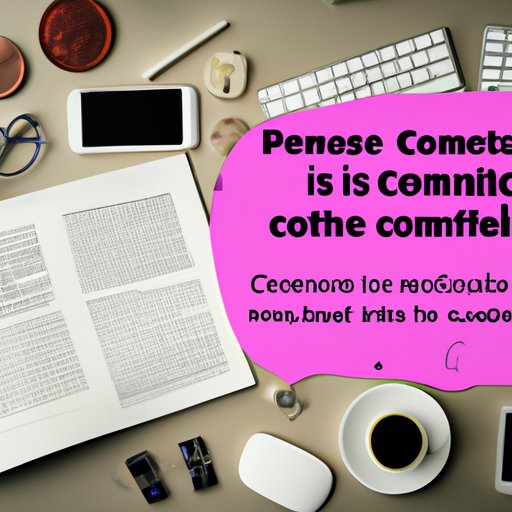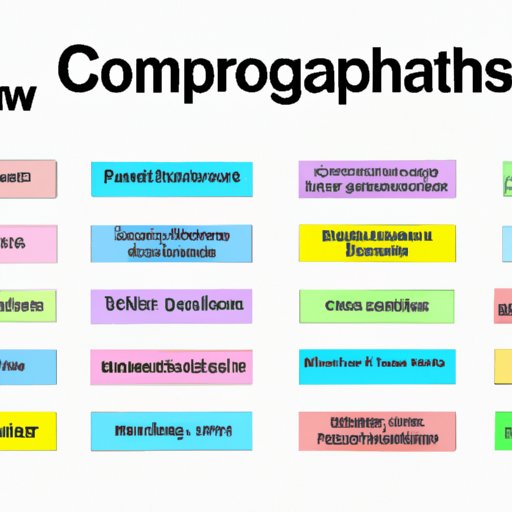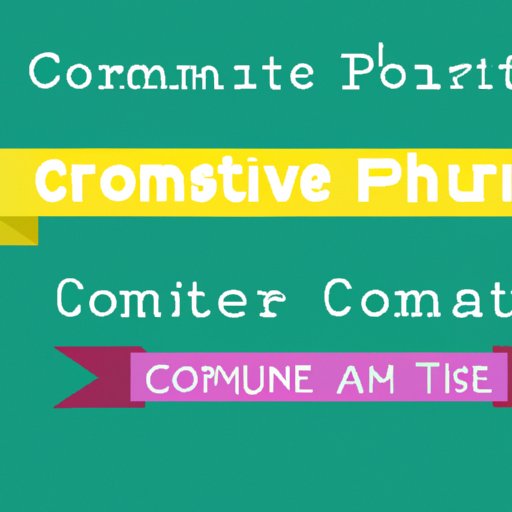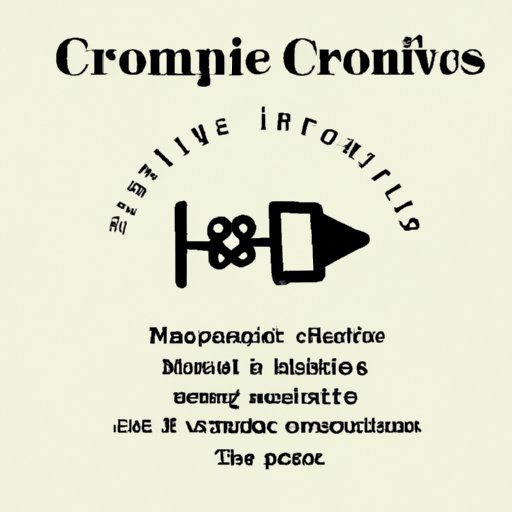Introduction
Creative Commons is an internationally recognized organization that has developed a set of licenses to help creators share their work legally. By granting users certain rights to reuse and modify content, Creative Commons makes it easier for people to collaborate and create new works. In this article, we will explore the benefits of using Creative Commons content, provide an overview of Creative Commons licenses, and discuss how to find and use Creative Commons resources.

Exploring the Benefits of Using Creative Commons Content
Creative Commons provides many benefits to those who use its content. Here are some of the key advantages:
Access to a Wide Range of Content
Creative Commons enables people to access a wide range of content that is not available through traditional copyright laws. This includes images, videos, music, and other types of creative works. By providing access to these materials, Creative Commons helps to foster creativity and collaboration.
Cost Savings
Using Creative Commons content can help you save money. Since the content is free to use, you don’t have to pay for licensing fees or royalty payments. This can be especially helpful for businesses, nonprofits, and educational institutions that need to produce content on a tight budget.
Ability to Share and Remix Content
Creative Commons also allows users to share and remix content. With the right license, you can use someone else’s work as inspiration for your own projects. This can help you create unique works of art and add value to the original creator’s work.

An Overview of Creative Commons Licenses
Creative Commons offers four main types of licenses, each with its own set of rules and restrictions. Here is a brief overview of each license:
Attribution (BY)
The Attribution license allows users to copy, distribute, display, and perform the work, as long as they give credit to the original author. This is the most popular Creative Commons license, as it provides the most freedom to users.
Non-Commercial (NC)
The Non-Commercial license restricts the use of the work to non-commercial purposes only. This means that the work cannot be used for any commercial purposes, such as advertising or selling products.
No Derivatives (ND)
The No Derivatives license restricts users from making any changes to the work. This means that the original work must remain unaltered in any way.
Share Alike (SA)
The Share Alike license requires users to share any modified versions of the work under the same license. This encourages users to share their work with others and keep the spirit of collaboration alive.
How to Choose the Right License for Your Content
When selecting a Creative Commons license for your content, it is important to consider how you want other people to be able to use your work. If you want to ensure that your work remains unchanged, then the No Derivatives license may be the best option. If you want to allow people to share and remix your work, then the Attribution or Share Alike license would be more suitable. It is also important to note that some Creative Commons licenses are more restrictive than others, so it is important to read the license carefully before selecting one.
How to Find and Use Creative Commons Resources
Once you have chosen a Creative Commons license for your content, there are several ways to access Creative Commons resources. Here are some tips for finding and using Creative Commons content:
Searching Creative Commons Repositories
There are numerous repositories where you can find Creative Commons content. You can search for specific content by keyword, or browse different categories. Some popular Creative Commons repositories include Flickr, Jamendo, and Wikimedia Commons.
Understanding the Terms of Use
It is important to read the terms of use for each Creative Commons resource carefully. Different resources may have different rules regarding how the content can be used. For example, some resources may require attribution, while others may not.
Making Sure You Follow Copyright Law
Even if the content is labeled as Creative Commons, it is still important to make sure you follow copyright law. This means that you should not use any material that is protected by copyright without permission from the copyright holder. Additionally, if you make changes to the original work, you should not attribute the changes to the original author.
Understanding Copyright Law and Creative Commons Rights
In order to use Creative Commons content responsibly, it is important to understand the basics of copyright law and Creative Commons licensing. Here are some key points to keep in mind:
Copyright Basics
Copyright law grants authors exclusive rights to their creative works. These rights include the right to reproduce, distribute, and publicly display the work. Unless otherwise stated, these rights are automatically granted to the author when the work is created.
Fair Use
Fair use is an exception to copyright law that allows limited use of copyrighted material without the author’s permission. Fair use generally applies to commentary, criticism, research, and teaching. It is important to note that fair use is determined on a case-by-case basis, so it is important to consult a lawyer if you are unsure whether your use of the material qualifies as fair use.
Creative Commons Licensing Guidelines
Creative Commons licenses provide additional rights beyond what is granted by copyright law. It is important to read and understand the terms of each license before using the content. Additionally, it is important to remember that some Creative Commons licenses are more restrictive than others, so it is important to choose the right license for your needs.

Crafting Your Own Creative Commons License
If you are creating your own work, it is important to craft a Creative Commons license that meets your needs. Here are some tips for creating an effective license:
Selecting the Right License
When selecting a Creative Commons license for your work, it is important to consider how you want other people to be able to use your work. Do you want to allow people to share and remix your work, or do you want to keep it unchanged? Depending on your needs, there are several different Creative Commons licenses to choose from.
Comparing Different Licensing Options
Once you have selected a license, it is important to compare the different options available. Each Creative Commons license has its own set of rules and restrictions, so it is important to read and understand each one before selecting a license.
Writing an Effective License
When writing a Creative Commons license, it is important to be clear and concise. Make sure that you clearly state which rights are being granted and which ones are restricted. Additionally, make sure to include contact information for the author and a link to the Creative Commons website.
Creative Commons in Education: What Educators Need to Know
Educators can use Creative Commons content to create engaging learning experiences for their students. Here are some tips for using Creative Commons content in the classroom:
Understanding the Benefits of Creative Commons
Creative Commons content can provide teachers with a wealth of resources to use in their classrooms. It is important to understand the different types of licenses available and how they can be used to create engaging learning experiences. Additionally, using Creative Commons content can help teachers save money and time.
Developing a Creative Commons Policy
It is important for educators to develop a policy for using Creative Commons content in the classroom. This policy should outline the types of content that can be used, the rules for using the content, and how to properly attribute the work. Additionally, it is important to make sure that all students understand the policy.
Creating Educational Activities With Creative Commons Content
Once you have established a Creative Commons policy for your classroom, you can start creating educational activities with Creative Commons content. This can include creating digital stories, remixing songs, or making videos. By using Creative Commons content, teachers can engage their students and create memorable learning experiences.

A Guide to Navigating Creative Commons Resources
Navigating Creative Commons resources can be confusing and time-consuming. Here are some tips for finding and using Creative Commons content:
Finding Free Content
There are numerous websites where you can find free Creative Commons content. Popular sites include Flickr, Jamendo, and Wikimedia Commons. It is important to read the terms of use for each site carefully before using any content.
Respecting Intellectual Property Rights
It is important to remember that even if the content is labeled as Creative Commons, it is still protected by copyright law. This means that you should not use any material that is protected by copyright without permission from the copyright holder.
Learning About Copyleft
Copyleft is another type of license that is similar to Creative Commons. Copyleft licenses allow users to freely copy, distribute, and modify the work, as long as the same rights are granted to others. It is important to read the terms of use for each Copyleft license carefully before using the content.
Conclusion
Creative Commons is a great way to access free content and collaborate with others. By understanding copyright law and Creative Commons licensing guidelines, you can use Creative Commons content responsibly. Additionally, it is important to craft an effective license for your own work and develop a policy for using Creative Commons content in the classroom. With these tips, you can navigate the world of Creative Commons and make the most of its resources.
(Note: Is this article not meeting your expectations? Do you have knowledge or insights to share? Unlock new opportunities and expand your reach by joining our authors team. Click Registration to join us and share your expertise with our readers.)
